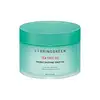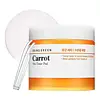What's inside
What's inside
 Key Ingredients
Key Ingredients

 Benefits
Benefits

 Concerns
Concerns

 Ingredients Side-by-side
Ingredients Side-by-side

Melaleuca Alternifolia Leaf Extract
PerfumingWater
Skin ConditioningCentella Asiatica Extract
CleansingButylene Glycol
HumectantMelaleuca Alternifolia Leaf Water
Antimicrobial1,2-Hexanediol
Skin ConditioningMelaleuca Alternifolia Flower/Leaf/Stem Extract
Skin ConditioningBetaine
HumectantDipropylene Glycol
HumectantHydroxyacetophenone
AntioxidantAllantoin
Skin ConditioningPanthenol
Skin ConditioningMelaleuca Alternifolia Leaf Oil
AntioxidantCarbomer
Emulsion StabilisingPolyglyceryl-10 Laurate
Skin ConditioningXanthan Gum
EmulsifyingArginine
MaskingDisodium EDTA
Ethylhexylglycerin
Skin ConditioningCapryloyl Salicylic Acid
Exfoliating4-Terpineol
MaskingMelaleuca Alternifolia Leaf Extract, Water, Centella Asiatica Extract, Butylene Glycol, Melaleuca Alternifolia Leaf Water, 1,2-Hexanediol, Melaleuca Alternifolia Flower/Leaf/Stem Extract, Betaine, Dipropylene Glycol, Hydroxyacetophenone, Allantoin, Panthenol, Melaleuca Alternifolia Leaf Oil, Carbomer, Polyglyceryl-10 Laurate, Xanthan Gum, Arginine, Disodium EDTA, Ethylhexylglycerin, Capryloyl Salicylic Acid, 4-Terpineol
Water
Skin ConditioningDaucus Carota Sativa Root Water
MaskingButylene Glycol
HumectantGlycerin
Humectant1,2-Hexanediol
Skin ConditioningSodium Lactate
BufferingGluconolactone
Skin ConditioningSalix Alba Bark Extract
AstringentPanthenol
Skin ConditioningAllantoin
Skin ConditioningCaffeine
Skin ConditioningHippophae Rhamnoides Fruit Extract
Skin ConditioningDaucus Carota Sativa Root Extract
Skin ConditioningCaprylyl Glycol
EmollientPolyglyceryl-10 Laurate
Skin ConditioningPolyglyceryl-10 Myristate
Skin ConditioningEthylhexylglycerin
Skin ConditioningDisodium EDTA
Melia Azadirachta Flower Extract
Skin ConditioningAlthaea Rosea Flower Extract
Skin ConditioningCitrus Aurantium Dulcis Peel Oil
MaskingDaucus Carota Sativa Extract
PerfumingMelia Azadirachta Leaf Extract
Skin ConditioningCurcuma Longa Root Extract
MaskingOcimum Sanctum Leaf Extract
Skin ConditioningBoswellia Carterii Oil
MaskingPelargonium Graveolens Flower Oil
MaskingVetiveria Zizanoides Root Oil
MaskingAmyris Balsamifera Bark Oil
MaskingCorallina Officinalis Extract
Skin ConditioningCyanocobalamin
Skin ConditioningMelaleuca Alternifolia Leaf Oil
AntioxidantDaucus Carota Sativa Seed Oil
EmollientRose Flower Oil
MaskingCitric Acid
BufferingGlycine Max Oil
EmollientBeta-Carotene
Skin ConditioningWater, Daucus Carota Sativa Root Water, Butylene Glycol, Glycerin, 1,2-Hexanediol, Sodium Lactate, Gluconolactone, Salix Alba Bark Extract, Panthenol, Allantoin, Caffeine, Hippophae Rhamnoides Fruit Extract, Daucus Carota Sativa Root Extract, Caprylyl Glycol, Polyglyceryl-10 Laurate, Polyglyceryl-10 Myristate, Ethylhexylglycerin, Disodium EDTA, Melia Azadirachta Flower Extract, Althaea Rosea Flower Extract, Citrus Aurantium Dulcis Peel Oil, Daucus Carota Sativa Extract, Melia Azadirachta Leaf Extract, Curcuma Longa Root Extract, Ocimum Sanctum Leaf Extract, Boswellia Carterii Oil, Pelargonium Graveolens Flower Oil, Vetiveria Zizanoides Root Oil, Amyris Balsamifera Bark Oil, Corallina Officinalis Extract, Cyanocobalamin, Melaleuca Alternifolia Leaf Oil, Daucus Carota Sativa Seed Oil, Rose Flower Oil, Citric Acid, Glycine Max Oil, Beta-Carotene
 Reviews
Reviews

Ingredients Explained
These ingredients are found in both products.
Ingredients higher up in an ingredient list are typically present in a larger amount.
1,2-Hexanediol is a synthetic liquid and another multi-functional powerhouse.
It is a:
- Humectant, drawing moisture into the skin
- Emollient, helping to soften skin
- Solvent, dispersing and stabilizing formulas
- Preservative booster, enhancing the antimicrobial activity of other preservatives
Allantoin is a soothing ingredient known for its protective and moisturizingg properties. Because of this, it is often added to products with strong active ingredients.
Studies show higher concentrations of this ingredient can promote wound healing.
Though it can be derived from the comfrey plant, allantoin is produced synthetically for cosmetic products to ensure purity.
Learn more about AllantoinButylene Glycol (or BG) is used within cosmetic products for a few different reasons:
Overall, Butylene Glycol is a safe and well-rounded ingredient that works well with other ingredients.
Though this ingredient works well with most skin types, some people with sensitive skin may experience a reaction such as allergic rashes, closed comedones, or itchiness.
Learn more about Butylene GlycolDisodium EDTA plays a role in making products more stable by aiding other preservatives.
It is a chelating agent, meaning it neutralizes metal ions that may be found in a product.
Disodium EDTA is a salt of edetic acid and is found to be safe in cosmetic ingredients.
Learn more about Disodium EDTAEthylhexylglycerin (we can't pronounce this either) is commonly used as a preservative and skin softener. It is derived from glyceryl.
You might see Ethylhexylglycerin often paired with other preservatives such as phenoxyethanol. Ethylhexylglycerin has been found to increase the effectiveness of these other preservatives.
This tea tree oil comes from the leaves of the Tea Tree plant. Tea tree oil has antioxidant, anti-inflammatory, and antimicrobial properties.
According to the book Journal of Profiles of Drug Substances, tea tree helps in reducing acne-causing bacteria such as Propionibacterium acnes. This is due to the Terpinen components of tea tree oil.
Tea tree may cause sensitivity and irritation for some people. This oil naturally contains fragrance such as linalool and limonene.
However, research shows irritation usually occurs when using pure tea tree oil and not in cosmetic products.
Tea tree oil was found to help relieve the symptoms of psoriasis in one study.
Tea tree oil is toxic when ingested. Another study showed it to caused damage to the nervous system of dogs and cats when applied to their skin or given orally.
Learn more about Melaleuca Alternifolia Leaf OilPanthenol is a common ingredient that helps hydrate and soothe the skin. It is found naturally in our skin and hair.
There are two forms of panthenol: D and L.
D-panthenol is also known as dexpanthenol. Most cosmetics use dexpanthenol or a mixture of D and L-panthenol.
Panthenol is famous due to its ability to go deeper into the skin's layers. Using this ingredient has numerous pros (and no cons):
Like hyaluronic acid, panthenol is a humectant. Humectants are able to bind and hold large amounts of water to keep skin hydrated.
This ingredient works well for wound healing. It works by increasing tissue in the wound and helps close open wounds.
Once oxidized, panthenol converts to pantothenic acid. Panthothenic acid is found in all living cells.
This ingredient is also referred to as pro-vitamin B5.
Learn more about PanthenolPolyglyceryl-10 Laurate is an ester of lauric acid and Polyglycerin-10.
Polyglyceryl-10 Laurate is a cleansing agent and emulsifier. It helps gather dirt, oil, and other pollutants to be rinsed away. As an emulsifier, it helps prevent ingredients from separating, such as oil and water.
Polyglyceryl-10 Laurate may not be fungal acne safe.
Learn more about Polyglyceryl-10 LaurateWater. It's the most common cosmetic ingredient of all. You'll usually see it at the top of ingredient lists, meaning that it makes up the largest part of the product.
So why is it so popular? Water most often acts as a solvent - this means that it helps dissolve other ingredients into the formulation.
You'll also recognize water as that liquid we all need to stay alive. If you see this, drink a glass of water. Stay hydrated!
Learn more about Water